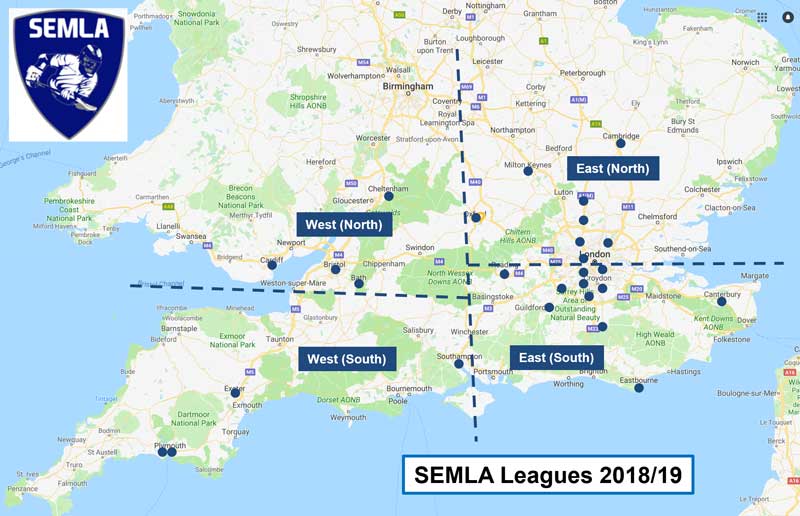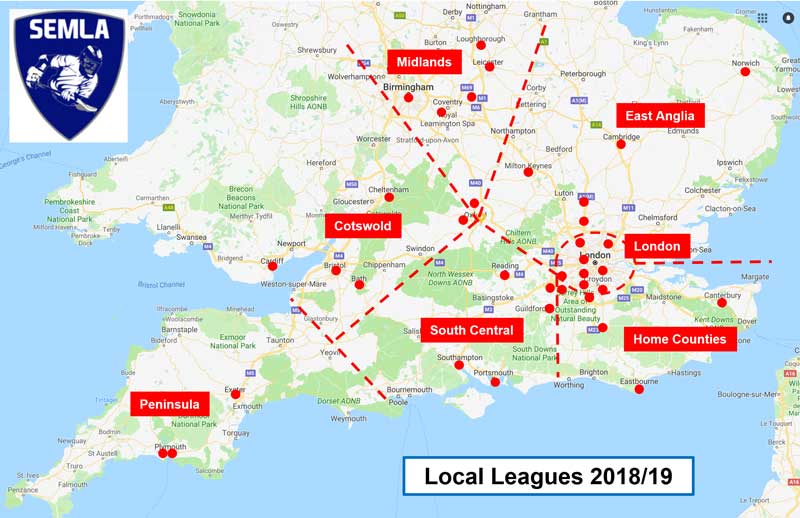Member clubs of the South of England Men's Lacrosse Association (SEMLA) have voted in favour of a radical shake-up of the league structure. It sees the biggest change in almost 15 years. Two parallel league competitions replace the current single league. The existing Flags knockout competition continues but with minor changes.
For as long as most players can remember, the SEMLA league consisted of a top Premiership division and East and West lower divisions. The game of men's lacrosse has grown over the past decade but had started to decline due to increasing travel times between teams. For example last season Brighton Panthers spent over 7 hours on the road to play Milton Keynes, 140 miles away. For Birmingham to play Plymouth required a round trip of over 400 miles. That's a big commitment for an amateur 80-minute game of lacrosse.
The new structure introduces two parallel league competitions with the existing Flags knockout competition, running on alternate Saturdays.

A "SEMLA League" sees the 21 top ranked teams playing across three division of 7 teams; Premier Division, Division 1 and Division 2. Below that the South of England divides into four; West (South), West (North), East (South) and East (North). This halves the greatest distance between any two teams in the lower regional divisions.

A parallel "SEMLA Local League" sees the South of England divided into smaller regions. The intention, where possible, is to have most teams within one hour's travel time. The Local Leagues will encourage new club growth and university team participation. This will through to reduced cost and travel commitments.
The Flags knockout competition remains the same but with a 'ripple-down' for 1st round losers into the lower Flags competition. This gives at least two Flags games for most teams. An option for neutral venues for Flags games will exist if two teams from different regions are to play each other with significant travel.
The benefits of the restructure are already visible. Eight new clubs applied to join SEMLA for the 2018/19 season. This included two new clubs in London and a clutch of clubs in the Midlands. The formation of a Midlands Local League is an exciting development as fills the void between the South and North England lacrosse associations. Some university teams not yet playing Saturday lacrosse will be keeping a close eye on next season. If it goes as planned SEMLA could see another influx of new teams for 2019/20 and continued growth of men's lacrosse, dubbed "the fastest game on two feet".